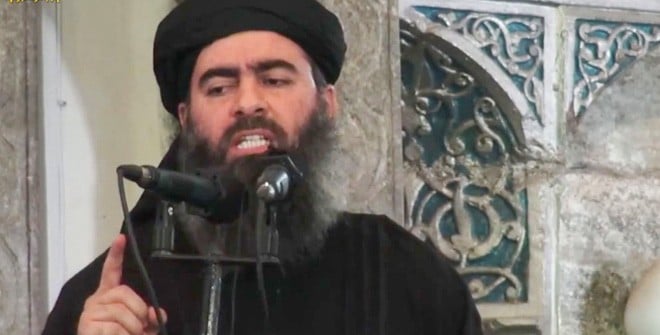
The ISIS is stated to have been formed by Abu Musab Al Zarqawi in 1999. During the 2003 Iraq War, it joined other Sunni insurgent groups

The Islamic State, as it is known today, seems to be an outcome of the vacuum created by the US invasion of Iraq -- first for a regime change and later in search of the Weapons of Mass Destruction (WMDs). But IS roots can be traced back much deeper into history.
Like al-Qaeda and many other jihadist groups, ISIS is believed to have emerged from the ideology of the Muslim Brotherhood, the world’s first Islamist group dating back to the late 1920s in Egypt.
IS follows an extreme interpretation of religion, promotes violence and regards those who do not agree with its interpretations as infidels or apostates. IS aims to establish a Salafist-orientated Islamist state in Iraq, Syria, and other parts of the Levant.
The Islamic State (IS), formerly the Islamic State of Iraq and the Levant (ISIL) or the Islamic State of Iraq and Syria (ISIS), is a Sunni jihadist group in the Middle East.
It claims to have religious authority over Muslims across the world and aspires to bring most of the Muslim-inhabited regions of the world under its control beginning with Iraq, Syria and other territories in the Levant region, including Jordan, Israel, Palestine, Lebanon, Cyprus and part of southern Turkey.
It has been designated as a foreign terrorist organisation by the United States, the United Kingdom, Australia, Canada, Indonesia and Saudi Arabia, and has been described by the United Nations as a terrorist group. The United Nations and Amnesty International have accused the group of grave human rights abuses.
Successor to Tanzim Qaidat al-Jihad fi Bilad al-Rafidayn--later commonly known as al-Qaeda in Iraq (AQI), the ISIS was formed by Abu Musab Al Zarqawi in 1999.
During the 2003 Iraq War, it joined other Sunni insurgent groups to form the Mujahideen Shura Council and consolidated further into the Islamic State of Iraq. At its height, it enjoyed a significant presence in the Iraqi governorates of Al Anbar, Nineveh, Kirkuk, most of Salah ad Din, parts of Babil, Diyala and Baghdad, and claimed Baqubahas a capital city.
The violent attempts by the Islamic State of Iraq to govern its territory led to a backlash from Sunni Iraqis and other insurgent groups circa 2008, which helped to propel the Awakening Movement and a temporary decline in the group.
ISIS grew significantly under the leadership of Abu Bakr al-Baghdadi gaining support in Iraq as a result of alleged economic and political discrimination against Iraqi Sunnis. Then, after entering the Syrian Civil War, it established a large presence in the Syrian governorates of Ar-Raqqah, Idlib, Deir ez-Zor and Aleppo.
In June 2014, it had at least 4,000 fighters in its ranks in Iraq. It has claimed responsibility for attacks on government and military targets and for attacks that killed thousands of civilians.
In August 2014, the Syrian Observatory for Human Rights claimed that the number of fighters in the group had increased to 50,000 in Syria and 30,000 in Iraq.
ISIS had close links to al-Qaeda until February 2014 when, after an eight-month power struggle, al-Qaeda cut all ties with the group, reportedly for its brutality.
The original aim of ISIS was to establish a caliphate in the Sunni-majority regions of Iraq, and following its involvement in the Syrian Civil War, this expanded to include controlling Sunni-majority areas of Syria.
A caliphate was proclaimed on June 29, 2014, Abu Bakr al-Baghdadi -- now known as Amir al-Mu’minin Caliph Ibrahim -- was named as its caliph and the group was renamed the Islamic State.
Some Sunni commentators, such as Adnan al-Aroor and Abu Basir al-Tartusi, say that ISIS and related terrorist groups are not Sunnis, but modern-day Kharijites -- Muslims who have stepped outside the mainstream of Islam, serving an imperial anti-Islamic agenda.
By declaring a caliphate, al-Baghdadi demanded the allegiance of all Muslims according to Islamic jurisprudence -- fiqah.
Following the 2013 expansion of the group into Syria and the announcement of the Islamic State of Iraq and the Levant, the number of wilayah -- provinces -- which it claimed increased to 16. In addition to the seven Iraqi wilayah, the Syrian divisions, largely lying along existing provincial boundaries, are Al Barakah, Al Kheir, Ar-Raqqah, Al Badiya, Halab, Idlib, Hama, Damascus and the Coast.
In mid-2014, ISIS created a new province incorporating both Syrian territory around Albu Kamal and Iraqi territory around Qaim. This new wilayah was designated al-Furat. In Syria, ISIS seat of power is in Ar-Raqqah Governorate. ISIS leaders, including Abu Bakr al-Baghdadi, are known to have visited its provincial capital, Ar-Raqqah.
Analysts have underlined the deliberate inflammation of sectarian conflict between Iraqi Shias and Sunnis during the Iraq War by various Sunni and Shia players as the root cause of ISIS rise. The post-invasion policies of the international coalition forces have also been cited as a factor, citing the coalition forces during the Iraq War for enshrining identity politics as the key marker of Iraqi politics. By 2014, ISIS was increasingly being viewed as a militia rather than a terrorist group.
ISIS has been able to strengthen its military capability by capturing large quantities and varieties of weaponry during the Syrian Civil War and Post-US Iraq insurgency. These weapons seizures have improved the group’s capacity to carry out successful subsequent operations and obtain more equipment.
In mid-2014, Iraqi intelligence extracted information from an ISIS operative which revealed that the organisation had assets worth US$2 billion, making it the richest jihadist group in the world. About three quarters of this sum is said to be represented by assets seized after the group captured Mosul in June 2014; this includes possibly up to US$429 million looted from Mosul’s central bank.
The group is widely reported as receiving funding from private donors in the Gulf states, and both Iran and Iraq have accused Saudi Arabia and Qatar of funding ISIS.